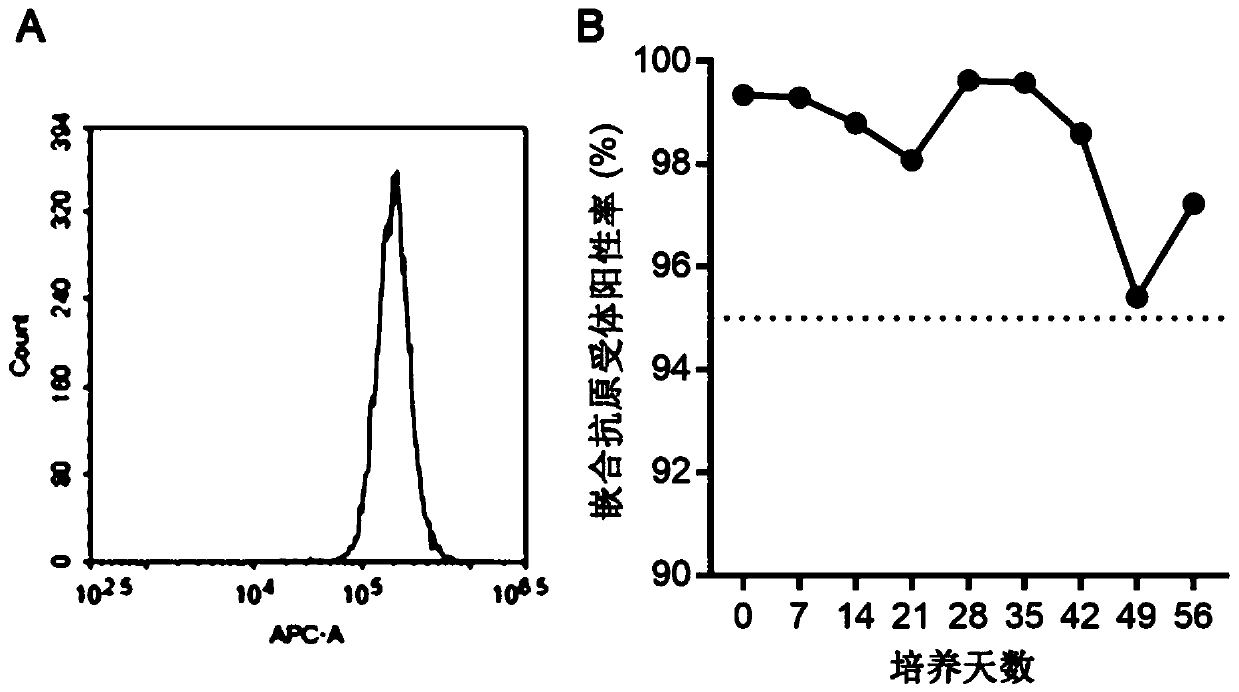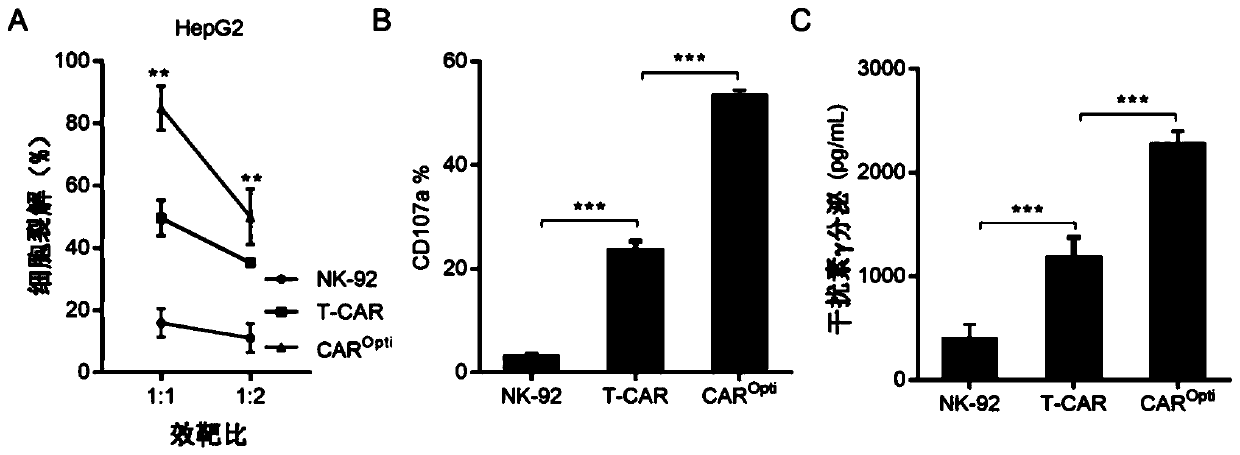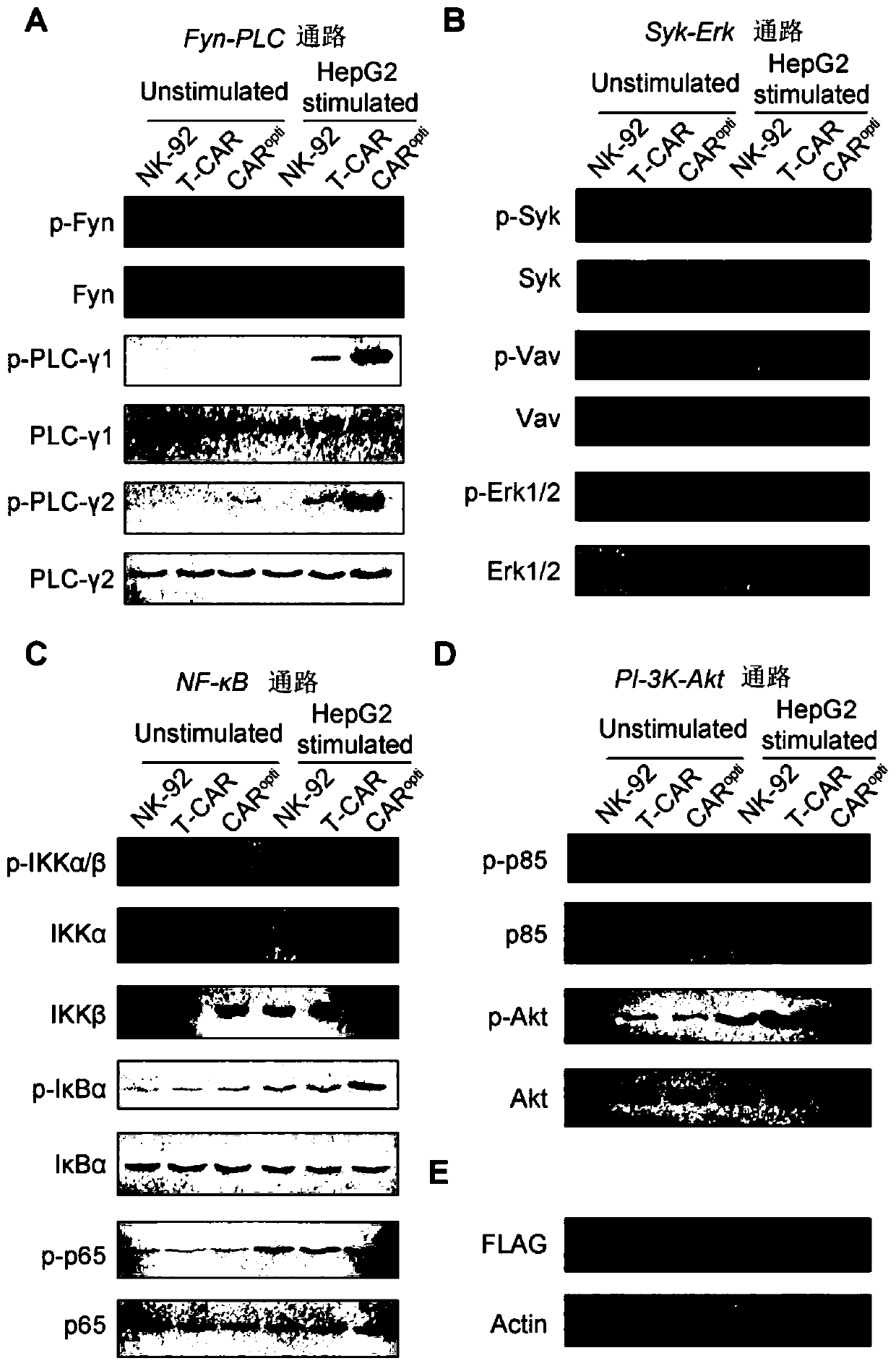Chimeric antigen receptor capable of specifically activating NK cells and application thereof
A chimeric antigen receptor and NK cell technology, applied in the field of biomedicine, can solve problems such as lack of research
- Summary
- Abstract
- Description
- Claims
- Application Information
AI Technical Summary
Problems solved by technology
Method used
Image
Examples
Embodiment 1
[0055] Example 1: Construction and stability testing of CAR-NK cell lines
[0056] experimental method:
[0057] 1. CAR lentiviral packaging: clone the chimeric antigen receptor sequence into a lentiviral vector, transfect the Lenti-X-293 cell line together with the packaging plasmid, culture continuously for 72 hours, collect the virus supernatant and filter it. The virus was concentrated by centrifugation at 20000rpm (82700g) for 2.5 hours, and the titer was quantified after the virus particles were resuspended.
[0058] 2. Establishment of CAR-NK cell line: Infect NK-92 cells with lentivirus according to MOI=1-50, and use FLAG-APC flow cytometry antibody to sort CAR-positive cells; secondary sorting. The secondary sorting cells are divided into single clones, and expanded culture.
[0059] 3. Stability detection of CAR-NK cells: CAR-NK cells were continuously cultured and passaged in complete medium, and the positive rate of CAR in the established cells was detected by F...
Embodiment 2
[0062] Example 2: CAR Opti The structure significantly improves the killing activity of NK cells
[0063] experimental method:
[0064] Cell killing experiment: The effect-to-target ratio (E:T) of CAR-NK cells is generally 1:1 and 1:2. The killing time is 2hrs. The target cells are HCC cell lines, which are all adherent cells and need to be prepared into a single cell suspension. Before cell digestion, PBS was used to wash off excess medium, and 0.25% trypsin was added to digest for 2-5min. Count effector cells: According to the effector-target ratio, the number of effector cells per tube or well is 40,000 and 80,000; take a certain amount of CAR-NK cells, centrifuge to resuspend and count, and adjust the concentration to 40,000cell / 250μL or 80,000cell / 250μL. Target cells were labeled with CSFE (sigma, 150347), every 10 6 Add 10 μL of 50 μM CSFE to each target cell, and incubate at 37 degrees for 15 minutes in the dark. Wash twice with ice-cold PBS, resuspend the cells w...
Embodiment 3
[0067] Example 3: CAR OptiStudy on the activation of signaling pathways related to NK cell killing by structure
[0068] experimental method:
[0069] Western-blot: Take 5×10 NK cells after killing 6 , 3000rpm, centrifuge for 5 minutes, transfer to a 1.5mL EP tube; add 200μL protein extraction reagent (Thermo ScientificPierce, 78505) to the cell pellet to resuspend, ice-bath for 30 minutes, shake once every 5 minutes; After 1 minute, the supernatant was carefully transferred to a clean EP tube, and protein quantification was performed using the BCA protein quantification kit (Thermo Scientific Pierce, A53225). After quantification, adjust the protein concentration of each group of samples to be consistent, add 5× loading buffer (Biyuntian, P0015) to the protein sample, mix well, boil in a water bath at 100°C for 5 minutes, cool and load the sample (10-20μL protein / lane ), while loading the protein Marker (Invitrogen, 26625); use 12% SDS polyacrylamide gel electrophoresis to...
PUM
 Login to View More
Login to View More Abstract
Description
Claims
Application Information
 Login to View More
Login to View More - R&D
- Intellectual Property
- Life Sciences
- Materials
- Tech Scout
- Unparalleled Data Quality
- Higher Quality Content
- 60% Fewer Hallucinations
Browse by: Latest US Patents, China's latest patents, Technical Efficacy Thesaurus, Application Domain, Technology Topic, Popular Technical Reports.
© 2025 PatSnap. All rights reserved.Legal|Privacy policy|Modern Slavery Act Transparency Statement|Sitemap|About US| Contact US: help@patsnap.com



